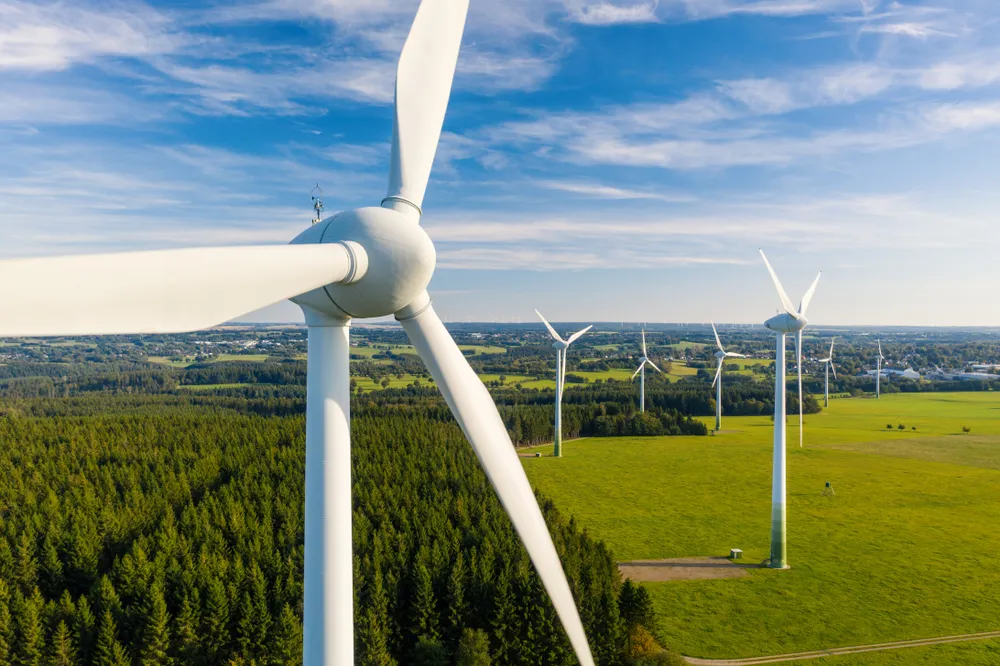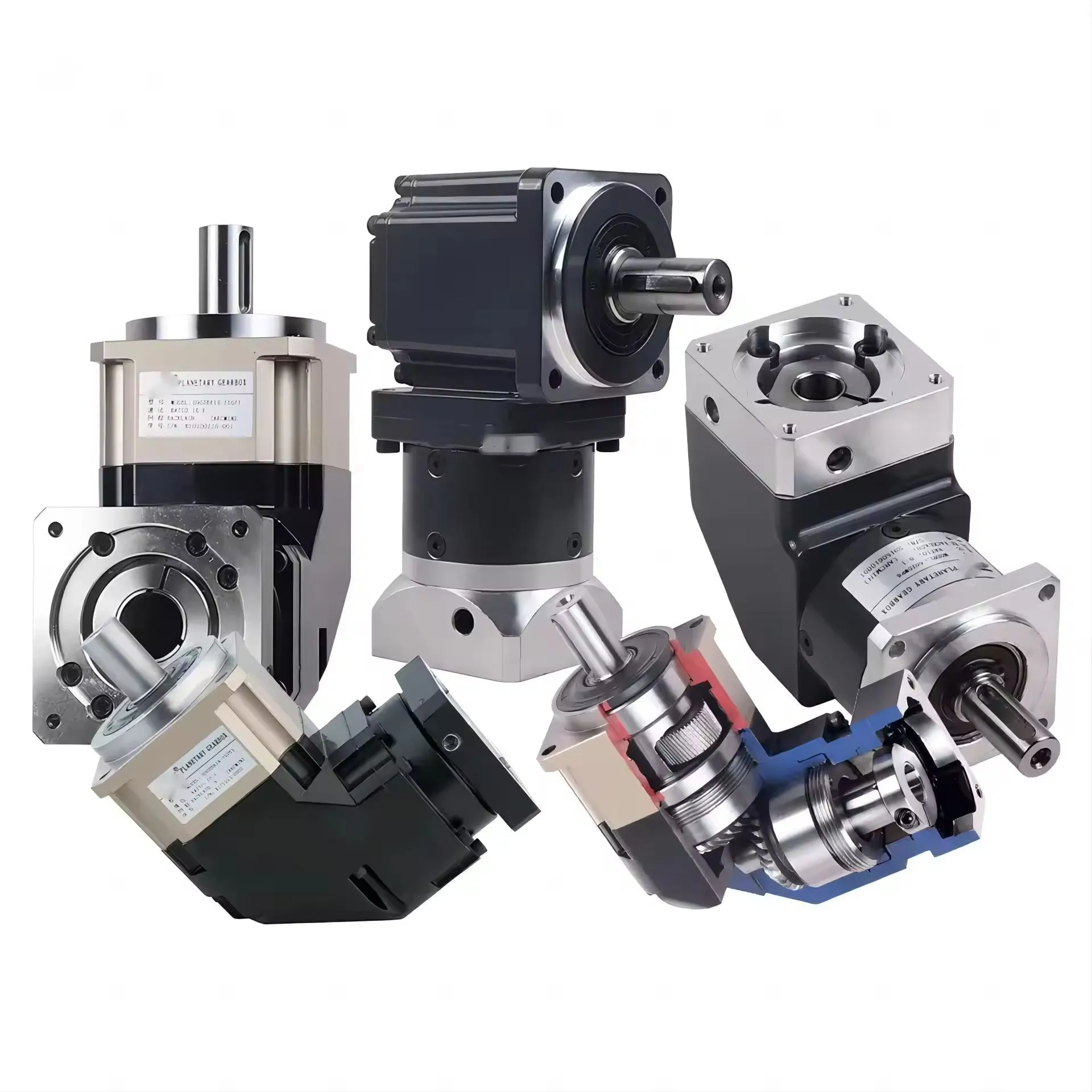Understanding Wind Turbine Gearboxes
Wind turbine gearboxes are pivotal mechanical components that bridge the gap between the slow-rotating turbine blades and the high-speed rotation needed by generators to produce electricity efficiently. These gearboxes work by increasing the revolutions per minute (RPM) from the turbine's rotor to a level suitable for the generator, transforming kinetic wind energy into usable electrical power. Constructed from durable materials like steel, aluminum, or brass, and designed in various types such as planetary, spur, bevel, helical, and worm gearboxes, each with unique advantages and engineering challenges, wind turbine gearboxes must withstand harsh environmental conditions, cyclical loads, and constant operation. Their design and maintenance are crucial for the reliable and efficient performance of wind turbines, making them a critical focus for enhancing the sustainability and effectiveness of wind energy generation.
The Importance of Wind Turbine Gearboxes
In the realm of wind turbine generators (WTGs), the question of whether a caja de cambios is necessary hinges on the technology employed. Direct drive systems, such as those used by the Goldwind 2.5 PMDD and various Enercon models, operate without gearboxes. However, the majority of wind turbine manufacturers opt to incorporate gearboxes into their designs, highlighting their critical role in enhancing turbine efficiency and functionality.
The primary purpose of a gearbox in a wind turbine is to increase the revolutions per minute (rpm). Wind turbine blades, especially longer ones, rotate at significantly slow speeds. It's crucial to maintain a lower tip speed for the blades to minimize noise pollution and reduce the structural load on the blades themselves.
Achieving the correct rotational speed necessary for power generation at the grid's required frequency involves utilizing a gearbox to transition from the main shaft, connected to the blades, to a secondary “high-speed” shaft linked to the generator's rotor. The conversion ratio varies by WTG model but can approximate 1:100, underscoring the gearbox's role in optimizing energy production efficiency.
Gearboxes are engineered to endure over two decades under cyclical, high-load conditions. Emergency shutdowns can expose gearboxes to extreme torque, with high torque also prevalent during startups. Gearbox failure not only results in significant production downtime but also necessitates substantial logistical efforts, including crane operations for the disassembly of the damaged component and the installation of a replacement.
Beyond their core function, gearboxes must meet several operational imperatives: they should operate quietly, minimize vibrations, and efficiently dissipate heat generated by internal mechanisms. This necessitates sophisticated lubrication systems and vibration absorption mechanisms integral to their design.
Typically constructed using a planetary gearing system, wind turbine gearboxes are outfitted with auxiliary systems that enhance their reliability and performance. For instance, analyzing the density of particles dissolved in the lubricant oil and monitoring gearbox vibrations can help detect issues early and predict potential failures.
The gearbox in a wind turbine is subject to a wide array of demanding and variable conditions, including fluctuating loads, stresses, vibrations, and temperatures. Components within the gearbox, such as bearings, must withstand such challenging environments. Thus, the development and successful operation of wind turbine gearboxes demand meticulous design, modeling, and testing processes.
In summary, while direct drive WTGs offer an alternative, the widespread adoption of gearboxes across the majority of wind turbine models speaks to their indispensable role in ensuring the efficient and reliable conversion of wind energy into electrical power. Through sophisticated design and technology, gearboxes enable wind turbines to meet the energy production requirements of the grid while withstanding the rigors of their operational environment.
Types of Wind Turbine Gearboxes
Key Components of a Wind Turbine Gearbox
The gearbox in a wind turbine plays a crucial role in transmitting mechanical power from the rotor (which turns due to wind hitting its blades) to the generator, where this mechanical power is converted into electrical energy. The gearbox does this by increasing the rotational speed from the slow-spinning rotor to the high-speed required by the generator. Here are the key components of a wind turbine gearbox:
- Low-Speed Shaft: Connects directly to the rotor of the wind turbine. When the wind turns the blades, this shaft turns at the same speed as the rotor (typically 30-60 revolutions per minute for large turbines).
- High-Speed Shaft: Drives the generator. The gearbox increases the rotational speed from the low-speed shaft before transferring it to the high-speed shaft, which can spin at speeds of up to 1,500 to 1,800 revolutions per minute.
- Engranajes: The most essential components inside the gearbox. There are typically two main types of gears:
- Planetary Gears: Used for their compactness and their ability to distribute the load over multiple points, which increases efficiency and durability.
- Helical Gears: Preferred for their smoother operation and less vibration compared to spur gears. Helical gears have angled teeth, which allows for a gradual engagement of the gear teeth and a more stable transfer of power.
- Rodamientos: Support the shafts and allow them to rotate with minimal friction. There are various types of bearings used, including roller bearings and ball bearings, chosen based on the load requirements and the design of the gearbox.
- Housing: Encases the gears, shafts, and bearings, providing protection from the environment and structural support. It is usually made of cast iron or steel to ensure durability and strength.
- Lubrication System: Critical for reducing wear and tear on the gears and bearings. It includes pumps, filters, coolers, and distribution systems to ensure that all moving parts are continuously lubricated.
- Brake: Some gearboxes include a mechanical brake system to stop the rotor in emergencies or for maintenance.
- Couplings: Connect the different shafts within the gearbox and to the generator. They accommodate misalignments and transmit torque efficiently.
- Cooling System: Maintains the optimal temperature inside the gearbox. It can include fans, heat exchangers, and cooling fins.
The gearbox's design and components can vary depending on the turbine manufacturer and the specific requirements of the wind turbine (such as its size and the speed range of the rotor). Advances in materials science and engineering have also led to the development of more durable and efficient gearboxes, contributing to the increased reliability and performance of wind turbines.




